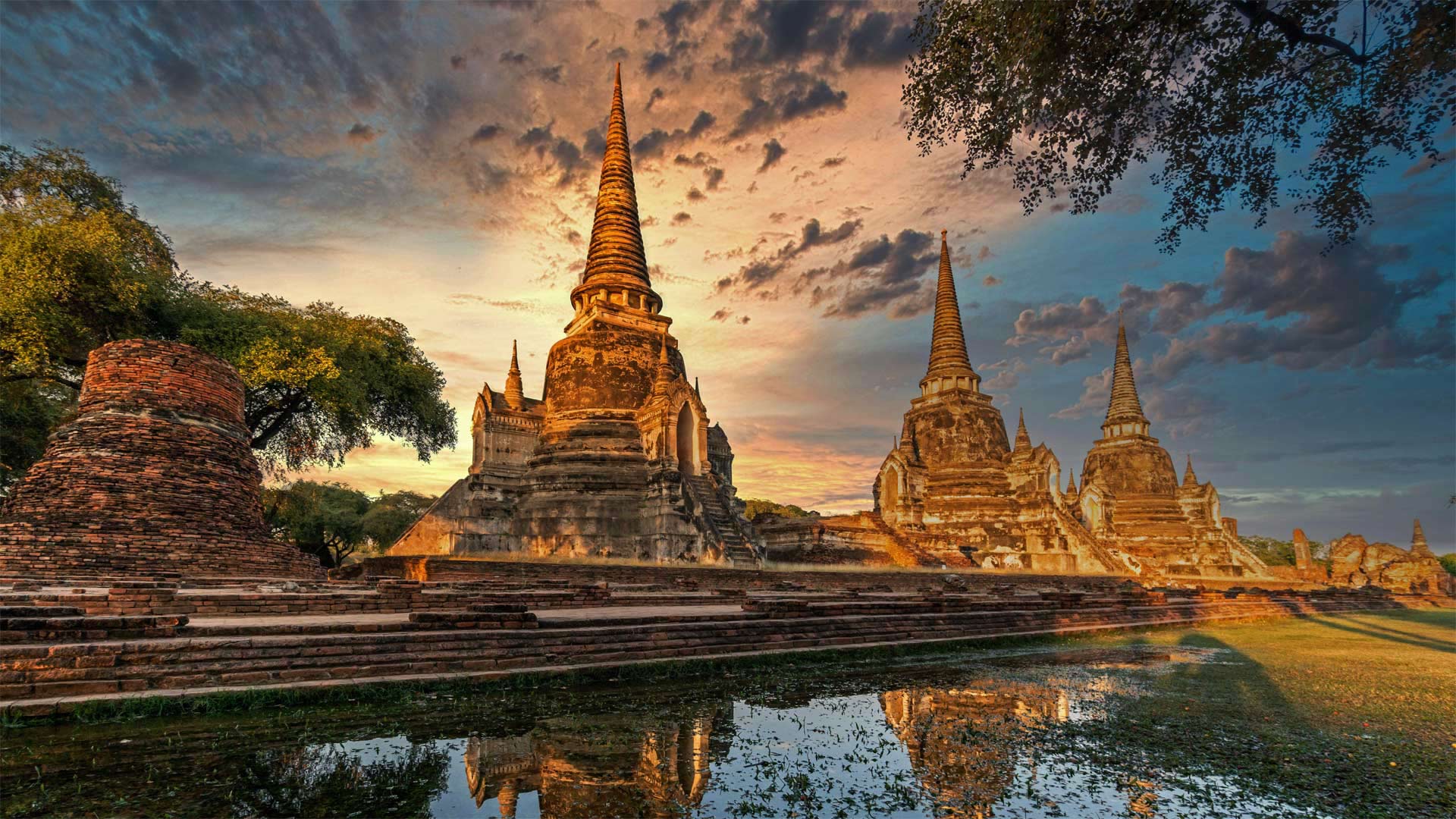大城历史公园中的帕喜善佩寺,泰国大城府 Wat Phra Si Sanphet, Ayutthaya Historical Park, UNESCO World Heritage Site, Ayutthaya, Thailand (© travelstock44/Alamy)

大城历史公园中的帕喜善佩寺,泰国大城府 Wat Phra Si Sanphet, Ayutthaya Historical Park, UNESCO World Heritage Site, Ayutthaya, Thailand (© travelstock44/Alamy)
Ruins of a royal temple
In present-day Thailand sit the ruins of the ancient kingdom that preceded it, Ayutthaya. Wat Phra Si Sanphet, shown here, was the holiest site in the capital of that kingdom, a royal temple containing a 52-foot tall, golden Buddha among other treasures. The first king of Ayutthaya, Ramathibodi I, ordered construction of a royal palace here in 1350. Nearly a century later, they palace was moved to a different location in the city and the former palace grounds were converted to a holy site.
The three structures shown are called chedis, bell-like structures, topped with miniature chedis on their roofs. After serving as the seat of the kingdom for 417 years, the capital city of Ayutthaya was sacked in 1767 by the invading Burmese, who melted down the copious gold of the temples and palaces, then set the buildings on fire. All but these three chedis were completely destroyed, and over time they fell into ruin. Restoration began on the chedis in 1956, but only the foundations of the rest of the complex remain.
皇家庙宇遗址
在今天的泰国,坐落着它之前的古老王国大城府的废墟。这里所示的瓦夫拉西桑菲特(Wat Phra Si Sanphet)是该国首都最神圣的地方,是一座皇家寺庙,里面有一尊52英尺高的金佛和其他珍宝。大城府的第一位国王拉马蒂博迪一世于1350年下令在这里建造一座皇宫。近一个世纪后,他们将故宫迁到了城市的另一个地方,原来的宫殿被改建成了圣地。
图中所示的三座建筑被称为钟形建筑,屋顶上覆盖着微型的钟形建筑。大城府在作为王国的首都417年后,于1767年被入侵的缅甸人洗劫一空,他们熔化了庙宇和宫殿的大量黄金,然后放火焚烧了这些建筑。除了这三个基德人以外,其余的人都被完全毁灭了,久而久之,他们就成了废墟。1956年开始对切迪斯进行修复,但只保留了建筑群其余部分的地基。
评论已关闭